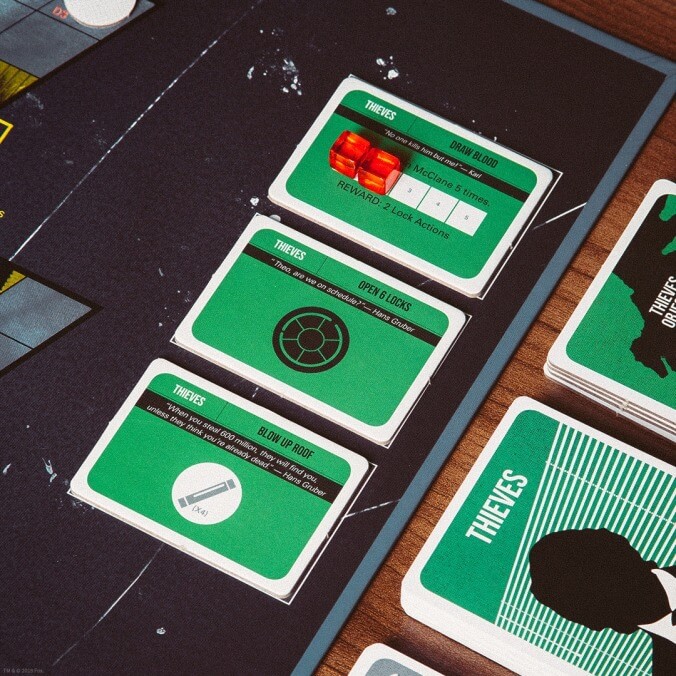Every Friday, A.V. Club staffers kick off our weekly open thread for the discussion of gaming plans and recent gaming glories, but of course, the real action is down in the comments, where we invite you to answer our eternal question: What Are You Playing This Weekend?
While it’s set during a Christmas Eve party, and celebrates the traditional holiday values of family, unlikely friendships, perseverance in the face of hardship, and the simple joy of throwing bad guys out of windows, there has been significant debate about whether
Die Hard actually counts as a Christmas movie. With its festive red and green color scheme, USAopoly’s
Die Hard: The Nakatomi Heist board game lands squarely in the Christmas camp, delivering all the cheer that comes from shooting, punching, and defenestrating your friends.
Like the Bruce Willis classic it’s based on, Die Hard: The Nakatomi Heist takes place over the course of three acts, as heroic underdog John McClane tries to foil the plans of Hans Gruber and his gang of hostage-taking thieves. One player controls McClane, who must complete a series of objectives during each stage based on beats from the movie, like acquiring a machine gun (“Ho ho ho”) and getting support from LAPD Sgt. Al Powell. Up to three other players control the thieves, who are trying to crack the locks to get their $640 million while also working to kill McClane.
The game is jam-packed with references. There are movie quotes on every card, and the thieves can stymie McClane by breaking windows, which will litter the floor with shards of glass. The objectives nearly recreate the movie scene for scene, except that McClane is much more likely to die before he can achieve his final goal of throwing Gruber out a window. McClane is fighting a war of attrition, playing cards that primarily let him move and shoot, shove or punch thieves while he scrambles around the board trying to pursue his objectives by flipping random tiles. Whenever he gets hurt by a thief, he discards a card from his deck. If he ever runs out of cards, he loses.
McClane’s cards get more powerful as the acts progress, eventually allowing him to increase his likelihood of attacking or sneak past thieves without being assaulted. But that’s barely enough to make up for the increased number of perpetually respawning thieves and higher complexity of the goals found on later maps.
While the thieves have numbers on their side, their lack of communication manifests in the form of limited control over their actions. When just one player controls them, they have one randomly selected card they don’t know about, one they do know about, and one they get to choose to try to guess the best options for taking a good turn. When multiple players are working together, they all get to see some of the cards but can’t communicate with each other, making play a bit more strategic but still imperfect.
The result is that the intensity of the action varies wildly turn by turn. Sometimes the thieves can just focus on drawing the random cards needed to crack the safe codes, and don’t interact with McClane in a meaningful way. Other times they can stack up around the game spaces indicating his goals and unleash a barrage of draining attacks, forcing him to expend precious ammo and cards to clear them away. Because of the randomization, it’s much harder for them to actually win by getting the money than it is for them to just wear McClane down through tactically maneuvering their superior forces.
Like the movie that inspired it, Die Hard: The Nakatomi Heist is entertaining, fast-moving, hyper-violent, and doesn’t require too much thought to appreciate. There’s just enough crunch to the gameplay to make it feel satisfying while providing tension through die rolls that can sometimes mean the difference between McClane getting gunned down, or making a daring escape to the next floor. When it’s over, you can swap sides and play again, putting aside the Christmas movie debate in favor of fighting about whether the thieves or McClane has the mechanical edge.


 Keep scrolling for more great stories from A.V. Club.
Keep scrolling for more great stories from A.V. Club.